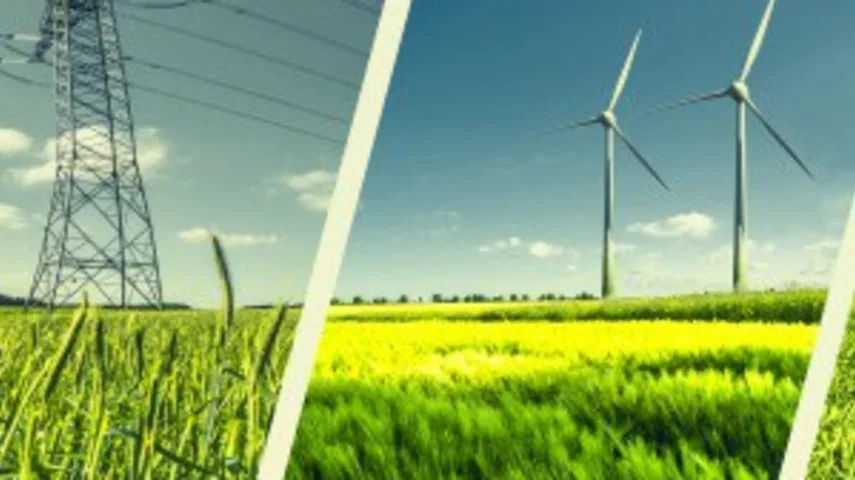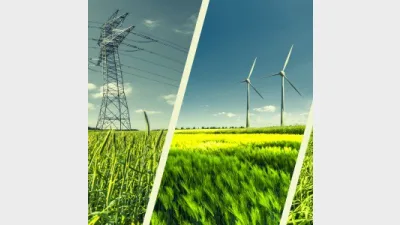Parties’ decarbonisation plans offer opportunities for infrastructure investors



Despite different pathways and pace of emission cuts, the plans of both the Coalition and the Australian Labor Party (ALP) will require substantial infrastructure investment and deployment, according to 4D Infrastructure.
The fund manager said that while both parties targeted Net Zero by 2050, the ALP had a faster trajectory, introducing a suite of policy measures aimed at delivering national emissions reductions of 43% below 2005 levels by 2030.
if(/Android|webOS|iPhone|iPad|iPod|BlackBerry|IEMobile|Opera Mini/i.test(navigator.userAgent)){
document.addEventListener('DOMContentLoaded',
function() {
var typesArray = {
desktop: [43],
tablet: [43],
mobile: [43],
};
var zoneArray = [287902];
var zoneDivId = '#momentum-azk98074-zoneunit';
changePlacements(1230436, 10860, true, zoneDivId, typesArray, zoneArray, null, 'momentum-azk98074-zoneunit');
})
}
.topsuperbanner_default{
width:300px;
height:605px;
background: #efefef;
}
#momentum-azk98074-zoneunit {
width: fit-content;
margin: 0 auto 5px;
}
#momentum-azk98074-zoneunit img {
max-width: 100%;
height: auto;
}
.topsuperbanner_default:empty{display:none;}
In comparison, the Coalition’s current target was a more modest 26-28% reduction by 2030, while projecting a 30-35% actual reduction.
Related News:
Jamieson Coote Bonds co-founder sets up fund distribution business
Higher monthly inflation leaves question mark over rate hikes
4D Infrastructure stressed that the ALP first established its 2050 Net Zero emissions target back in 2015, which was ahead of the United Nations Conference on Climate Change in Paris, and acknowledged that Australia’s transition required a decarbonisation pathway.
if (/Android|webOS|iPhone|iPad|iPod|BlackBerry|IEMobile|Opera Mini/i.test(navigator.userAgent)) {
document.addEventListener('DOMContentLoaded',
function() {
var typesArray = {
desktop: [0],
tablet: [43],
mobile: [43],
};
var zoneArray = [316693];
var zoneDivId = '#momentum-azk98072-zoneunit';
changePlacements(1230436, 10860, true, zoneDivId, typesArray, zoneArray, null, 'momentum-azk98072-zoneunit');
})
}
.mobile_superbanner_default{
width:300px;
height:605px;
background: #efefef;
}
#momentum-azk98072-zoneunit {
width: fit-content;
margin: 0 auto 5px;
}
#momentum-azk98072-zoneunit img {
max-width: 100%;
height: auto;
}
.mobile_superbanner_default:empty{
display: none;
}
However, it wasn’t until October 2021 that the Coalition introduced its policy target of Net Zero by 2050.
“To put both plans in perspective, Australia has already reduced emissions by ~20% on 2005 levels,” the manager said.
if (/Android|webOS|iPhone|iPad|iPod|BlackBerry|IEMobile|Opera Mini/i.test(navigator.userAgent)) {
document.addEventListener('DOMContentLoaded',
function() {
var typesArray = {
desktop: [0],
tablet: [5],
mobile: [5],
};
var zoneArray = [282282];
var zoneDivId = '#momentum-azk56700-zoneunit';
changePlacements(1230436, 10860, true, zoneDivId, typesArray, zoneArray, null, 'momentum-azk56700-zoneunit');
})
}
#momentum-azk56700-zoneunit {
width: fit-content;
margin: 0 auto 5px;
}
#momentum-azk56700-zoneunit img {
max-width: 100%;
height: auto;
}
#momentum-azk56700-zoneunit:empty{
display: none;
}
According to the ALP’s ‘Powering Australia Plan’ would be focused on policy measures in three key sectors of the economy – electricity, industry & carbon farming, and transport, which in 2021 collectively accounted for ~79% of national emissions.
Further to that, by 2030, the ALP projected the economic impact of its policies to include:
- 63,994 direct and 604,000 indirect jobs;
- Estimated required investment of at least A$76b (A$24b public sector / A$52b private sector);
- Renewables to be 82% of the National Electricity Market (higher than the 68% forecast in the Coalition plan); and
- Annual average electricity retail bills projected to decline by A$275 p.a. by 2025 (-18%) and A$378 p.a. by 2030 (-26%).
Recommended for you
A new funds distribution business has launched in Australia, seeking to bring institutional offerings to the wholesale market and led by co-founder of Jamieson Coote Bonds.
Higher interest rates could be on the cards for 2026 after monthly CPI inflation for October showed an increase of 3.8 per cent.
Global actively managed ETF assets hit a record high in October, according to independent research and consultancy firm ETFGI, breaking the record set the previous month.
Federation Asset Management has appointed an investment director and head of responsible investments to support ESG integration strategy across the firm.












